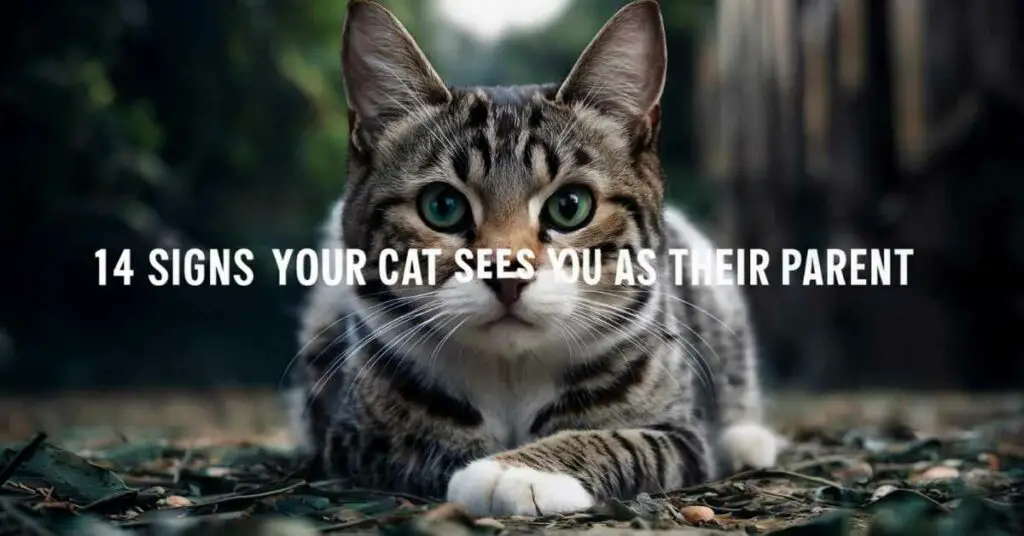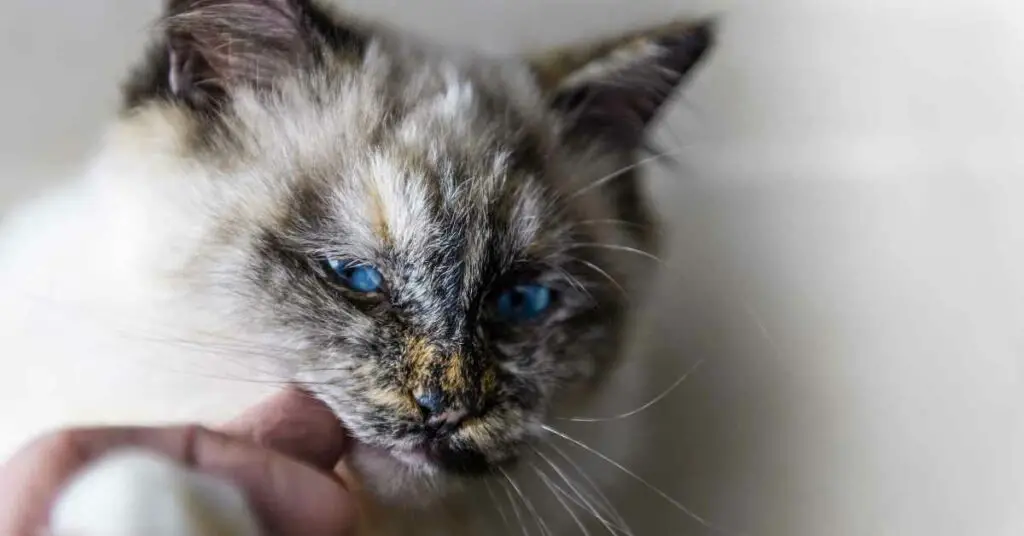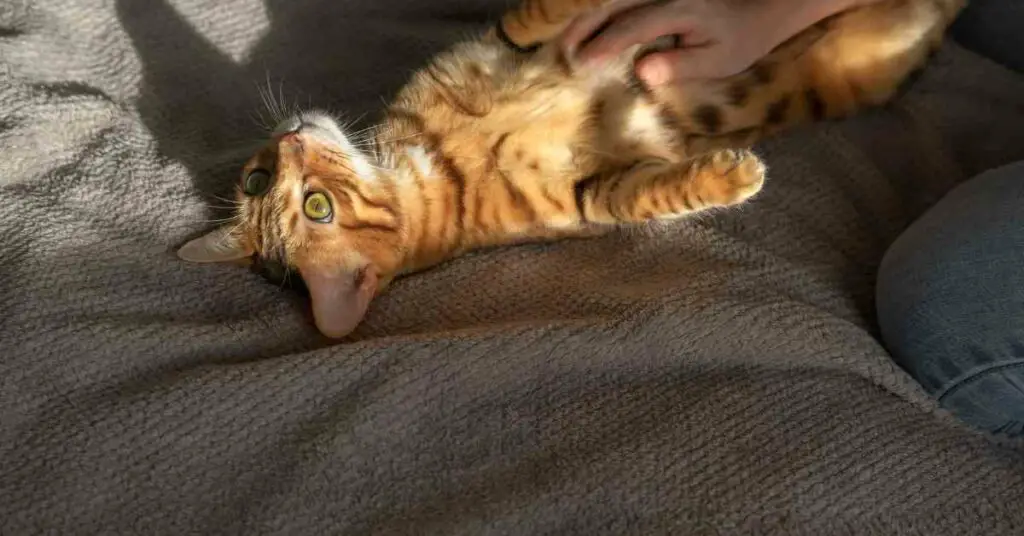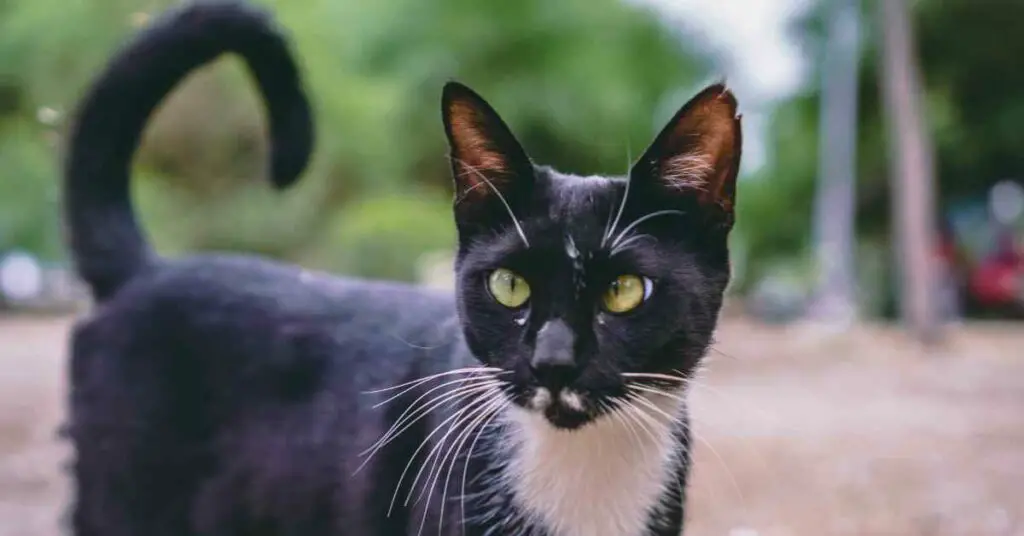Have you ever seen a baby duck follow its mother? Cats can act like that too, picking one special animal or person as their favourite. A while ago we wrote about a kitten choosing a dog as her new mother. In our house, here in China, Ling is seen as Lychee and Teeny’s mother as she spent a lot of time with them while they were young.

Ling is the chosen mother in our house. This chosen person is like the cat’s parent, providing safety and care. But how can you tell if you’re that special someone for your cat? Here are 14 signs that your cat sees you not just as their favourite human but as their parent.
1. Sitting on Your Belongings

Have you ever walked into a room to find your cat comfortably nestled on your laptop or favourite sweater? While this may appear to be a simple quest for warmth or comfort, there’s a deeper connection here. Cats have scent glands all over their bodies that produce pheromones—unique chemical signals used for communication. When your cat chooses to sit on your belongings, they’re leaving their scent on your things, marking you as part of their territory. This behavior signifies that they see you as an integral part of their world.
2. Gentle Nibbling

We might mistake gentle bites for a sign of irritation from your cat, but these gentle nibbles, often called “love bites,” are a unique way your cat expresses their affection towards you. Your cat isn’t trying to hurt you; quite the opposite. These little nibbles are reminiscent of how mother cats groom their kittens, using gentle nibbles to clean and soothe them. The key here is gentleness. A love bite shouldn’t hurt; if it does, your cat might be signaling something else.
3. Exposing Their Belly

This adorable behaviour is actually not an invitation to rub their belly. In the wild, the belly is one of the most vulnerable parts of a cat’s body, exposing vital organs. When your cat shows their belly, it’s a profound demonstration of their trust and love. They’re literally putting their life in your hands, akin to a child finding comfort and security in the presence of their parent.
4. Tail Held High

In the world of cats, a tail held high is essentially their version of a friendly handshake. It’s a cat’s way of signaling friendly intentions and contentment. In the wild, cats use this tail posture to signal non-aggression to other cats. When your cat approaches you with their tail held high, they’re signaling their trust and happiness towards you. For cats with shorter tails, like Manx cats or bobtails, pay attention to the position of their ears. Ears pointed forward show that your cat is relaxed and happy in your presence—a clear sign of affection.
5. Following You Around
In the wild, cats are solitary hunters but social animals within their families. If your cat is always nearby or follows you around, it’s a sign they view you as a key part of their family. This behavior has roots in kittenhood when kittens follow their mother to explore the world safely. When your cat does this, it’s not just about curiosity or companionship—it’s about security and trust. To your cat, you’re more than just their human; you’re their protector and source of comfort.
6. Showing Weakness
In the wild, showing any sign of weakness can make a cat vulnerable to predators. If your cat feels comfortable enough to let their guard down, such as limping or showing you a wound, it means they trust you on a level that transcends their primal instincts. They’re demonstrating a level of trust that only comes from a deep-seated sense of safety and assurance, akin to the bond between a parent and child.
7. Chattering
Traditionally, you might observe your cat chattering while gazing out a window at birds. This behavior is believed to be linked to their deep-seated hunting instincts. However, when a cat chatters at a human, it’s likely a different form of communication altogether. Some experts believe that when cats chatter at their human companions, it’s their attempt to mimic our speech and communicate on our terms. It’s an endearing behavior that showcases your cat’s comfort level around you and their attempt to bridge the language barrier between species.
8. Playfulness
In the wild, cats learn important survival skills through play. Kittens practice their hunting prowess by pouncing on each other, stalking their siblings, and darting about in mock fights. When your feline friend engages in playful behaviour with you, it’s a significant display of trust and camaraderie. This interaction is a form of social bonding, much like a child playing a game with their parent. It’s your cat’s way of expressing their comfort and happiness in your presence.
9. Sleeping with You
Sleep is a vulnerable state for any creature, cats included. They instinctively seek out safe places for their slumber, where they can rest assured that no threat will catch them off guard. If your cat chooses to sleep with you, they’re not just choosing your warmth and companionship—they’re expressing their deep-seated trust and love for you. It’s akin to a child preferring to sleep in their parent’s room during a thunderstorm, reassured by their presence.
10. Exposing the Soft Undersides of Paws
The soft underside of a cat’s paw is a vulnerable area. Predators and environmental hazards can inflict serious injuries there. Therefore, a cat wouldn’t expose this delicate region to just anyone. In the world of cats, trust is earned, not given. If your feline friend freely exposes the underside of their paws to you, it’s a major sign of trust.
11. Grooming
The act of grooming each other, known as “allogrooming,” is common among social animals, and cats are no exception. Cats groom each other to strengthen social bonds and express intimacy. When your cat decides to groom you, it’s their unique way of including you in their circle of trust—their feline family.
12. Eating Nearby
Cats are solitary hunters, and eating time is when they’re most vulnerable to attacks. For them, it’s instinctive behaviour to seek a safe and secure place where they can enjoy their catch without the fear of predators. If your cat starts eating when you are close or even waits for you to be near before they eat, it’s a massive sign that they see you as their protector.
13. Meowing
Once they’ve grown out of the kitten stage, cats don’t typically meow at each other. They’ve developed this form of communication to interact with humans. If your cat frequently meows at you, they’re making an effort to communicate with you. It’s their unique language, their attempt to connect with you and express their needs or feelings.
14. Bringing You Gifts
In the wild, cats bring back their kills to share with their colony, especially kittens and those who can’t hunt for themselves. When your cat leaves you a hunting present on your doorstep or at the foot of your bed, they’re essentially showing care for you in the best way they know how—providing food. They’re sharing something they worked hard for and are proud of.

